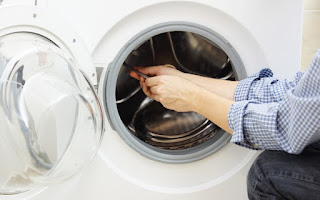How to Drain the Washing Machine and Why?
Washing Machine Draining Process:
A washing machine is an appliance that washes clothes in a tub filled with water. A washing machine has a drain hose, which can be connected to a sink or the rest of the plumbing system, and which conveys dirty water into the sewer (or septic tank) or drains it directly outside. The washer performs two cycles: one for cleaning and rinsing, and one for spinning (or "wringing") water from the clothes.
Most modern machines have an agitator in the drum to help separate clothing fibers as they are being cleaned. Some newer machines also use an internal pump to remove excess water from the drum after it has been filled with clothes; this approach is called "no-drain" because there is no drain hose connected to the drum.
How often Should You Drain a Washing Machine?
Some people don't bother to drain their washing machine at all, while others drain it every time they wash. Drain your washing machine once in a month but not too often as this may damage the machine, or if you are using a front-loading washer, it may cause pressure issues.
Why Should You Drain a Washing Machine?
Washing machines can be costly and time-consuming to maintain. They are also quite inefficient in terms of water usage, which is why you should drain your washing machine every month.
1) Draining the machine provides a fresh start for laundry detergent; it also helps get rid of mold, mildew and other contaminants before they become a problem.
2) Draining the machine prevents clogging and removes any buildup that has accumulated over time. This can help reduce electricity consumption as well as prevent any fires from occurring during future use.
Why do We Put So Much Time into Our Washing Machine Draining?
We put a lot of effort into our laundry and then we wonder why there is a dirty mess after washing. It turns out that the reason may be simple - too much detergent. So what is the solution? Lower your detergent levels, use a more natural soap, and add just enough water to fill the machine. This may seem like a simple solution but it’s actually not such an easy one. You have to experiment with different combinations of detergents, soaps, and water levels in order to find what works for you.




Comments
Post a Comment